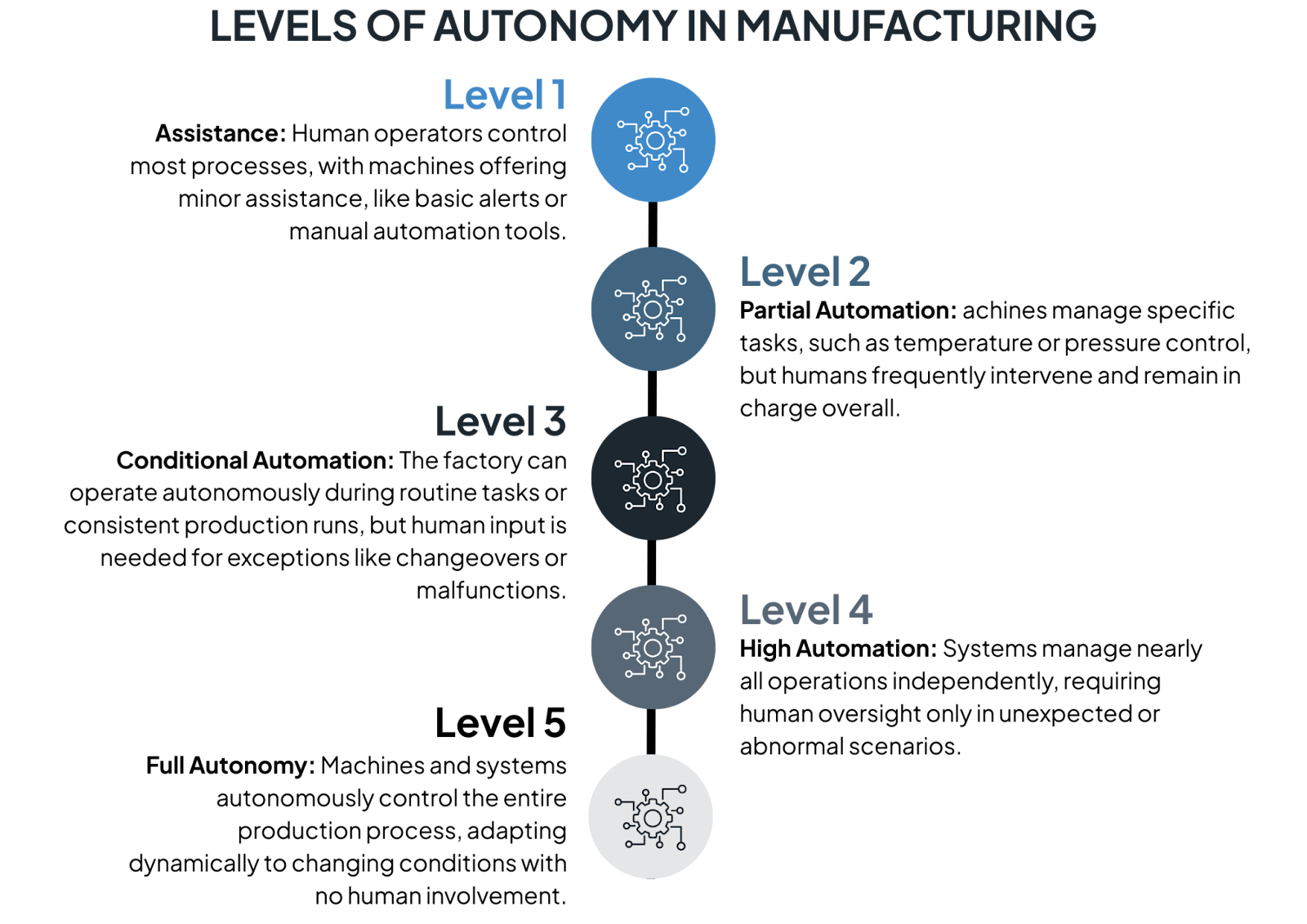%20(21).png)
For More Information
Contact us!.png)
%20(37).png)
Dipesh Patel is the President & CEO of DP Gayatri, partnering with OEMs and Contract Manufacturers to automate and scale operations. A seasoned management consultant and graduate of the UofM Carlson School of Management, he brings strategic leadership to a portfolio of manufacturing and automation companies delivering factory automation, contract assembly, facility relocation and expansion, and supply chain localization across the U.S. and Latin America.
An autonomous factory is a highly advanced manufacturing factory designed to operate with minimal human intervention. These factories rely on cutting-edge technologies like artificial intelligence (AI), machine learning, robotics, and the Internet of Things (IoT) to make real-time decisions and optimize production processes.
Autonomous factories are at the forefront of factory automation, representing a leap forward in efficiency and adaptability. For example, they utilize AI algorithms for predictive maintenance, detecting and addressing equipment issues before they impact production. Machine learning enhances process optimization, while IoT connects machines to enable seamless communication and data sharing across networks. With automation systems working tirelessly, manufacturers can reduce labor costs, waste, and errors.
But can AI deliver fully automated factories? The integration of AI is critical to achieving full factory autonomy. It powers systems that continuously learn and adapt to changes, fine-tunes production lines, and even forecasts market demands. To explore how Factory automation can revolutionize manufacturing, visit our page.
An automated factory is a facility where pre-programmed processes execute specific tasks with little to no manual input. It differs from an autonomous factory in one significant way: while automated factories follow static, pre-defined instructions, autonomous factories integrate adaptive learning and real-time responses.
This difference marks a clear evolution. Automation began by mechanizing repetitive tasks such as assembly or material handling. However, newer systems powered by robotics and IoT introduced flexibility, with capabilities for automated factory automation that adapt to dynamic production needs. Now, autonomous systems self-correct and improve based on data.
In summary, understanding what is the meaning of automated factory automation encompasses grasping the evolution from fixed repetitive automation to self-directed systems, representing a transformation toward autonomy that blends intelligence into manufacturing processes.
Automated systems are technologies designed to perform tasks or processes with minimal human oversight. These are the bedrock of both automation and autonomy in factories. Common examples include:
What automated systems really boils down to the foundational mechanisms that set the stage for full autonomy. While these systems rely on predefined commands, integrating them with AI and IoT transforms them into smarter, more adaptive networks. For instance, an automated assembly line equipped with IoT sensors can detect defective parts and recalibrate in real-time, reducing waste.
Levels of autonomy in manufacturing describe the extent to which decision-making and operational control are handled by automated systems rather than humans. At lower levels, human operators perform most tasks with limited machine support. As autonomy increases, systems gain the ability to monitor, analyze, and act independently, reducing the need for human intervention and enabling greater efficiency and scalability.
Here’s a simplified overview of the levels, drawing a parallel with autonomous driving to help conceptualize factory automation maturity:
Much like the automotive industry’s progression toward self-driving vehicles, manufacturers are working to move up the autonomy scale in pursuit of smarter, more adaptive factories. This framework provides a useful model for understanding the gradual evolution toward fully automated industrial operations.

Automation means using machines to do tasks that were once performed by humans. It replaces manual labor for performing repetitive jobs, such as assembling products or monitoring equipment.
Think about daily life examples of automation, like a washing machine that runs on a preset program or a coffee maker that brews your morning coffee at specific times. Similarly, factories use automation for tasks like:
But how do automated factories work? The process starts with sensors detecting changes in temperature, pressure, or material loads. Machines then adjust settings, execute actions, and send feedback to fine-tune performance. These systems form the backbone of smart manufacturing, paving the way for fully autonomous factories.
Ready to revolutionize your production line with innovative solutions? Explore how Factory automation can unlock the full potential of your manufacturing processes. Visit our website to discover the technologies, benefits, and strategies behind smarter, more autonomous production.
